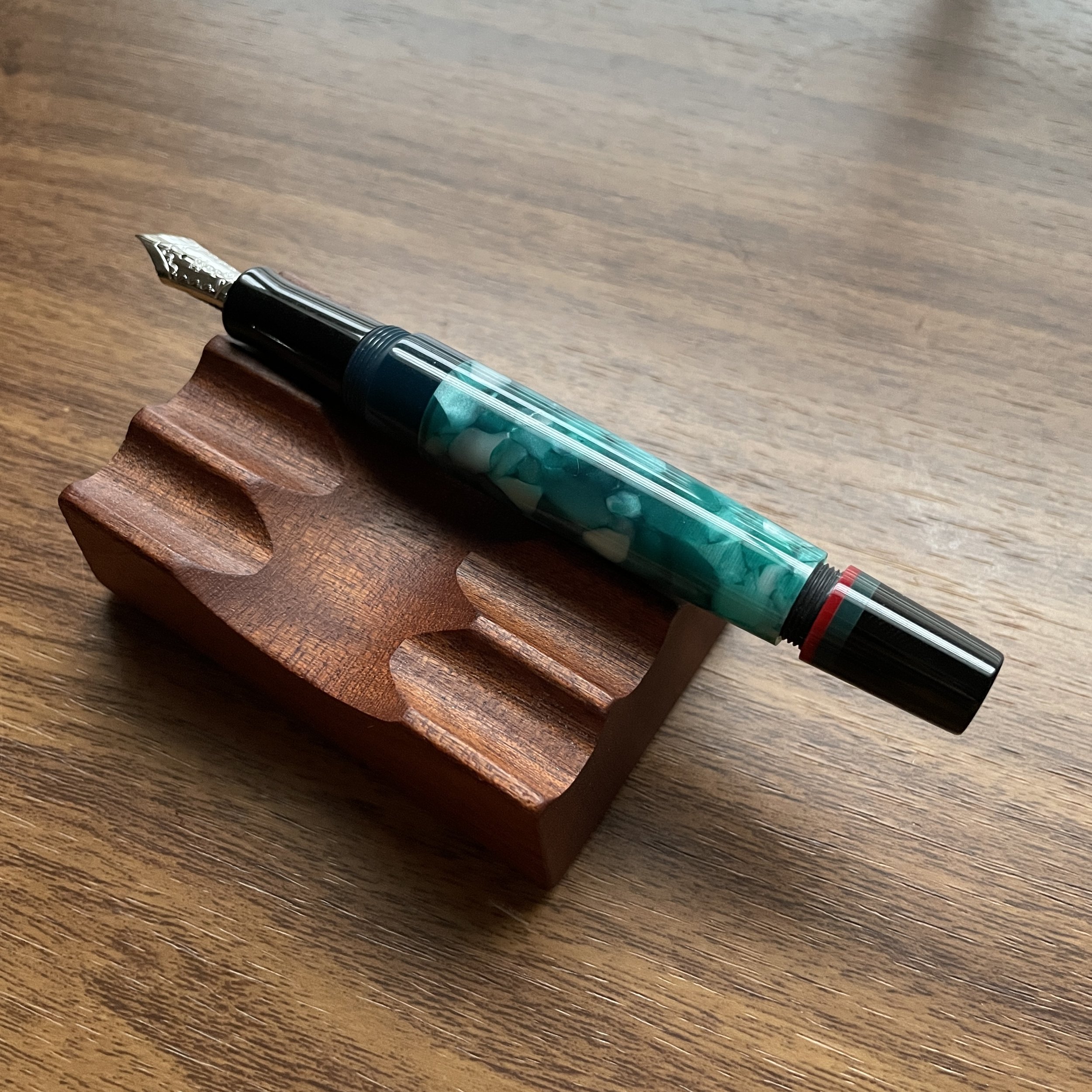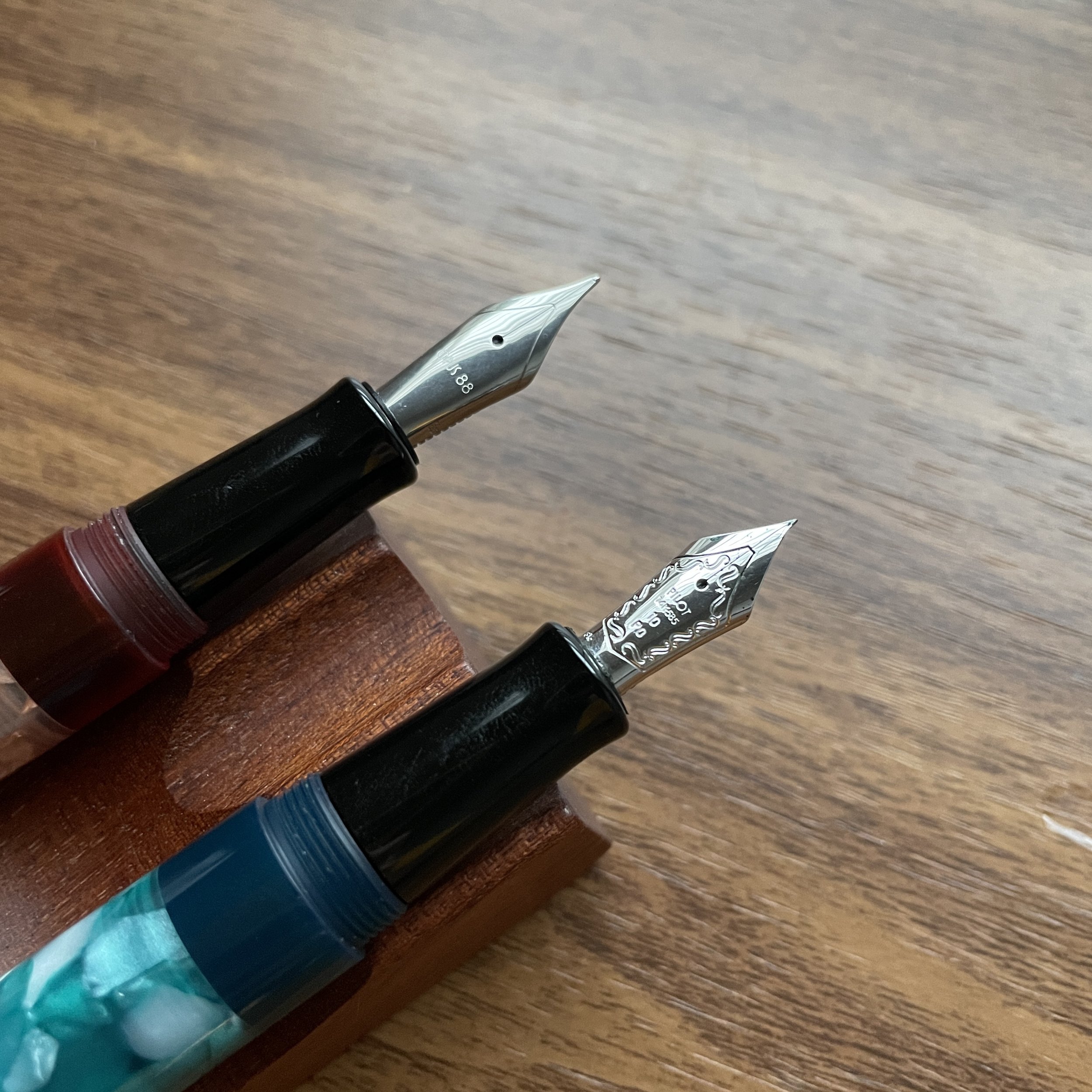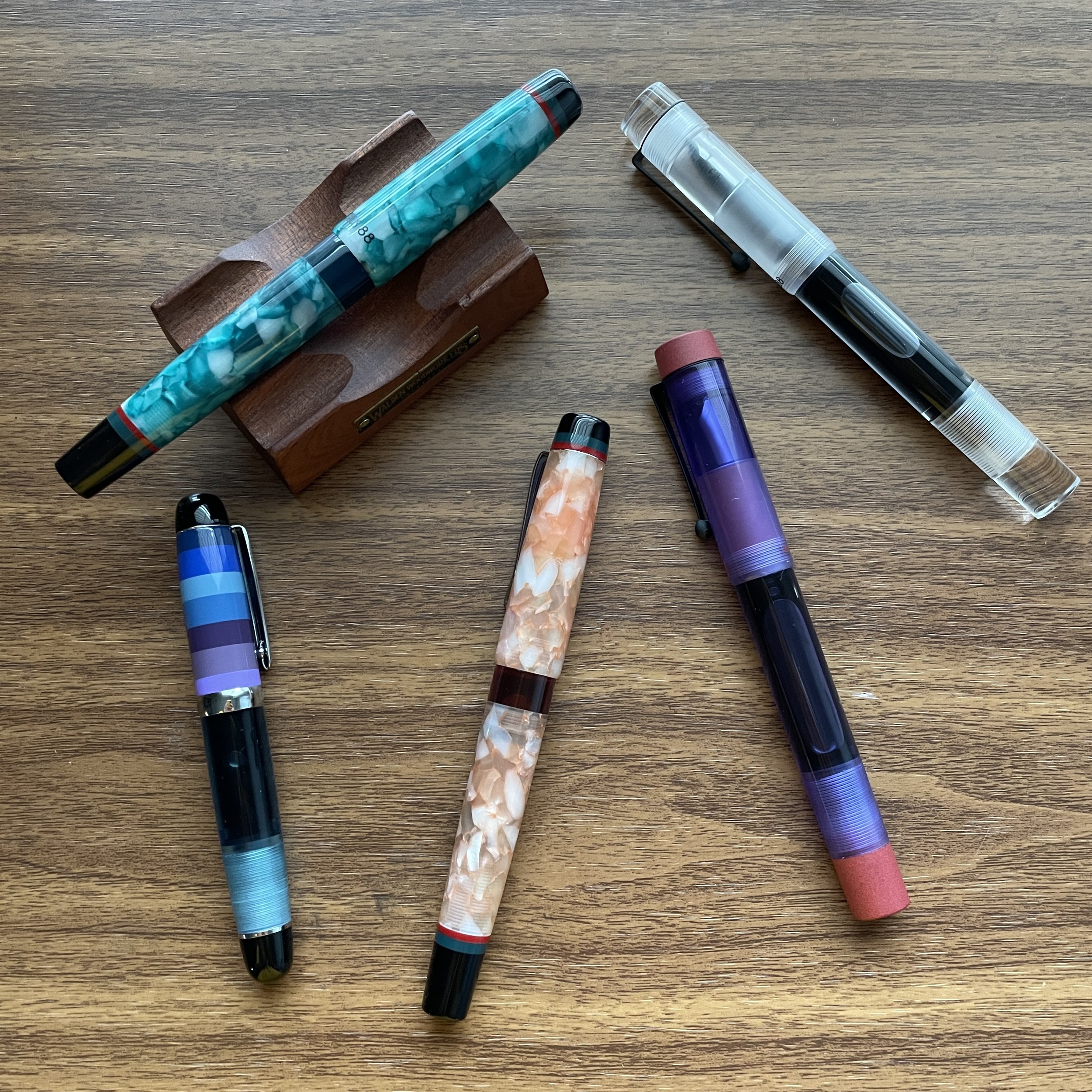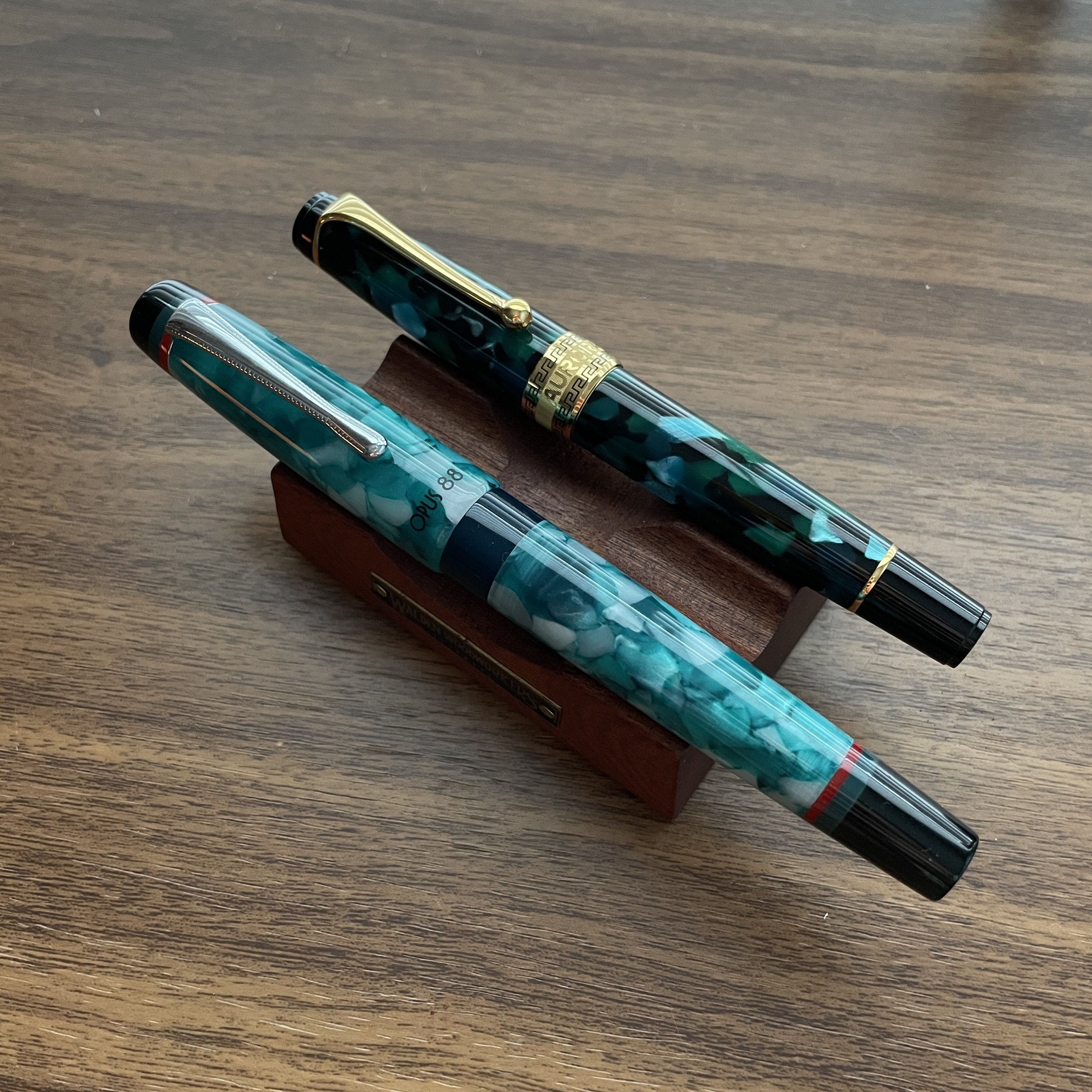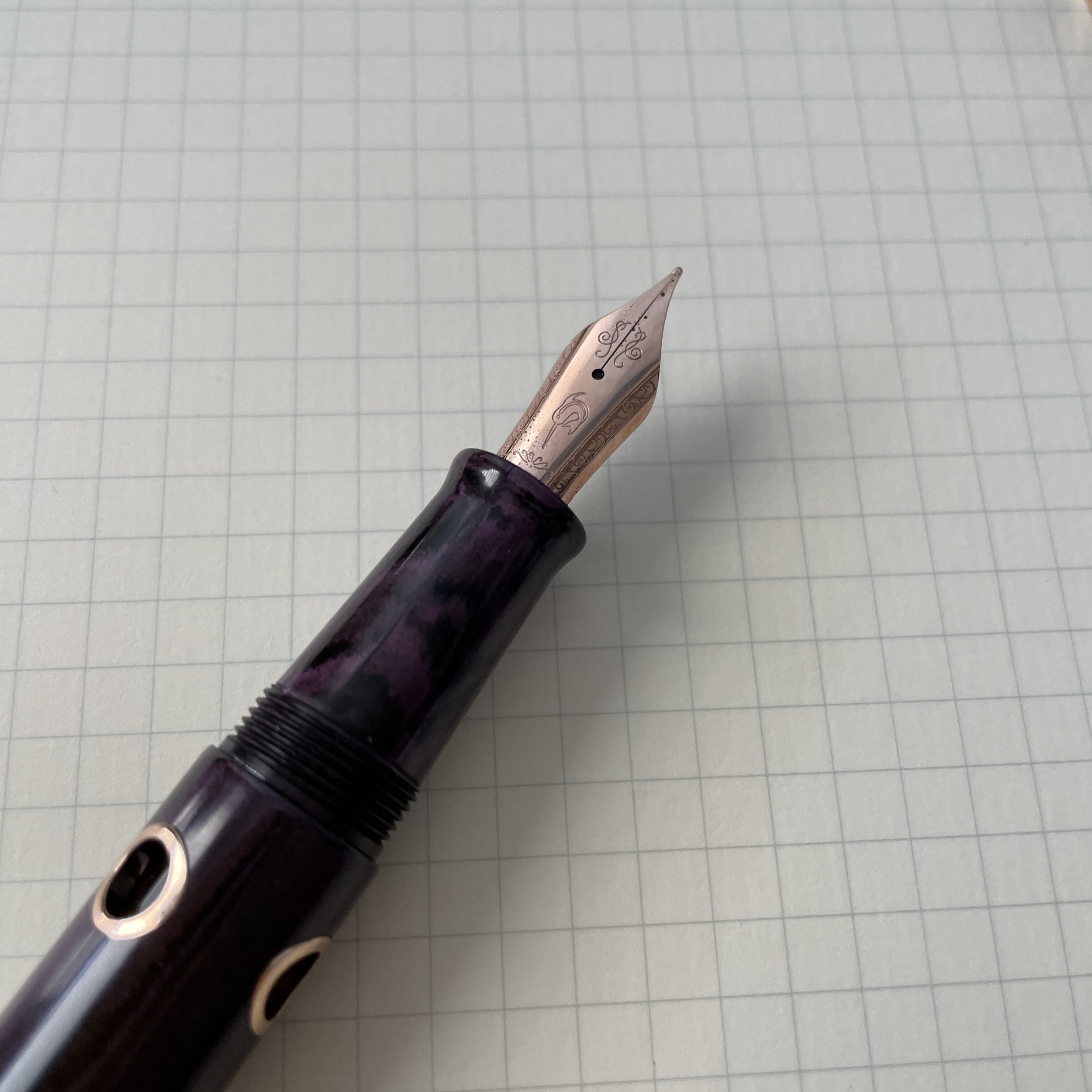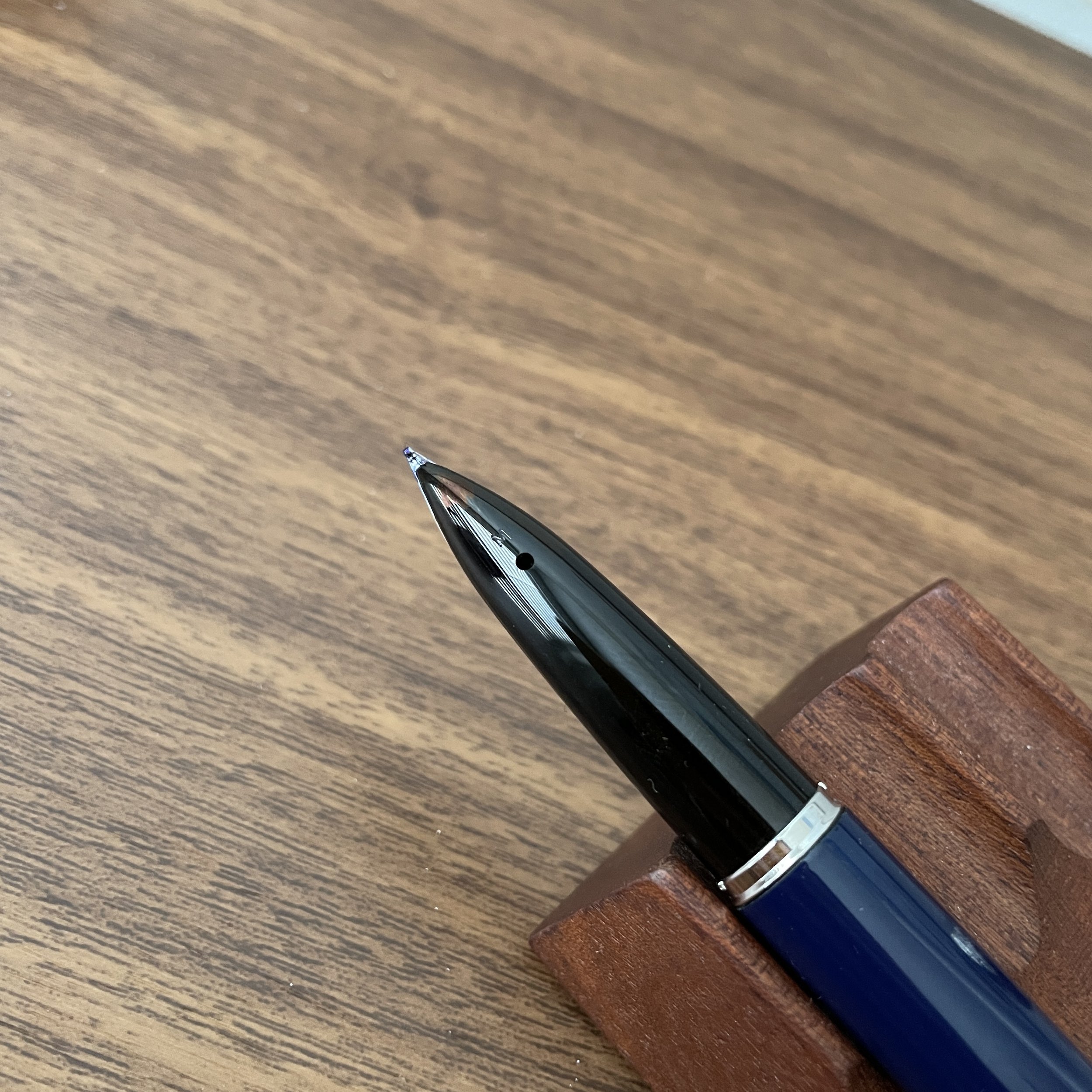I’m not sure if you could call Opus 88 fountain pens a “guilty pleasure” of mine, but they’ve certainly taken on a much larger role in my personal pen rotation over the past few years. From the time I first discovered the ebonite + acrylic Koloro demonstrators, to recently when I’ve been partial to the larger Omar and Jazz pens, I’ve been enamored with the high-capacity Japanese-style eyedropper filling system, which previously was only widely available in extremely high-end urushi and maki-e pens from companies such as Danitrio. Recently, Opus 88 has been expanding their lineup to include pens with more of a focus on design, incorporating different materials and color combinations that has enhanced the brand’s appeal and turned Opus 88 into a major player in the $90-200 price segment. The pen I’m reviewing today, the Opus 88 “Minty” fountain pen, is one of those recent releases.
Design and Build
Last week I posted some photos of the Opus 88 Minty in my post revisiting the Aurora Optima, since these pens share a common design profile, which I would characterize as a “streamlined flat-top.” It’s a classic, vintage-inspired design that, at least to me, never gets old, especially when paired with materials such as the “cracked ice”-style acrylics that Opus 88 chose for this pen.
The Opus 88 Minty comes in two colors: “Light Green” and “Orange”, which despite their names I would characterize as more of a teal blue and a coral/salmon, respectively. They’re beautiful colors, especially the orange. I also like the double band of color on the finials.
As an acrylic pen, the Minty is lightweight despite its relatively large size. Surprisingly, when placed next to the clear Opus 88 Demonstrator (pictured below), the Minty is only ever-so-slightly shorter, yet due to the streamlined design it feels much more compact in the hand. It also features a longer concave grip section, with shorter, more compressed threads that don’t interfere with my grip when writing. In fact, I hardly ever feel them.
While most of the Opus 88 fountain pens that have been transparent demonstrators, the Minty has an ink window to offer visibility into your ink supply.
What is a Japanese-style eyedropper? You fill the pen with ink directly into the barrel, and operate the end cap like a piston to open/close a valve that allows ink to flow to the nib. This system prevents leaking and ink burping that sometimes plagues eyedropper pens, especially during travel.
Writing Experience
Opus 88 offers an exceptionally good writing experience across the board, and I don’t think I’ve actually had a poor experience with any of their pens (though some of their designs work better for my hand size and shape than others, from a comfort perspective). This particular model is a great workhorse, suitable for longer writing sessions, not just due to the large ink capacity but the rounded shape. The tapered barrel allows you to post the pen, and even though it’s longer, it’s so light you don’t notice the extra weight.
While some might consider the Opus 88’s stainless steel JoWo nib unremarkable, in my opinion it’s a fine selection for a pen at this price point, and as discussed below, it adds versatility to the pen that leaves it open to modification, if you so desire. JoWo nibs themselves are rock-solid writers, and if you’ve been in the pen hobby for any length of time you’ve probably started to accumulate at least a handful of different JoWo-threaded units that you can swap between pens.
Overall Versatility and a Note on Modifications
Though I don’t recommend pen modifications to anyone unless you’re willing to accept responsibility if something goes wrong, one of my favorite aspects of the “Opus 88 experience” is the versatility. Like the Opus 88 Omar and Jazz fountain pens, you can swap out the stock Opus 88 JoWo nib with any other JoWo nib unit, or one of the JoWo compatible housings from Flexible Nib Factory, which allow you to use nibs from other brands such as Platinum, Pilot, Sailor, and more. (The green Minty pictured here features a Pilot PO (”Posting”) nib that I appropriated from a stock Custom Heritage 912 purchased years ago.) Another modification I’ve played around with is removing the clip, which gives you the option of creating a more streamlined pen. Again, proceed with any modifications at your own risk, as it definitely (and justifiably) voids your pen warranty.
On my orange Minty, I left the extra-fine JoWo stainless steel nib in place. The green one I outfitted with a Pilot PO nib using a replacement nib housing purchased from Flexible Nib Factory.
Takeaways and Where to Buy
The Minty is a welcome addition to the Opus 88 lineup, and I hope Opus 88 does more with this shape/model going forward, perhaps in other materials and with a clipless option. I liked this particular pen so much that after Opus 88 sent me two samples for review, I inquired about adding this model to the Curated Shop, and I’m happy to have a handful of these pens available for sale. They fit the profile of exactly what I’m looking to carry going forward: well-built, versatile workhorse fountain pens that won’t break the bank.
Please note that we are continuing our Fountain Pen Day sale and promotions/giveaway through the weekend! Until tomorrow (November 6, 2022), take an additional 10% off your order using the coupon code “FOUNTAINPEN” at checkout, and receive a complimentary ink sample with all fountain pen purchases, including the purchase of any Opus 88 fountain pen.
Several new Opus 88 eyedropper fountain pens that I have in for review. Please stay tuned!
Further Reading on Opus 88
Opus 88 is a manufacturer based in Taiwan that currently offers a wide range of fountain pens in a variety of styles and materials. To read more about Opus 88 as a company, as well as some of the other models they offer, visit the Opus 88 section of the T.G.S. Fountain Pen Review Archive.
The Gentleman Stationer is supported entirely by purchases through the T.G.S. Curated Shop and pledges via the T.G.S. Patreon Program. If you’re in the market for any of the stationery that we carry directly, please consider purchasing from us, as it allows us to remain independent of third-party advertising or affiliate support. We are authorized retailers of all brands sold (with the exception of “Gently Used” secondhand products).
